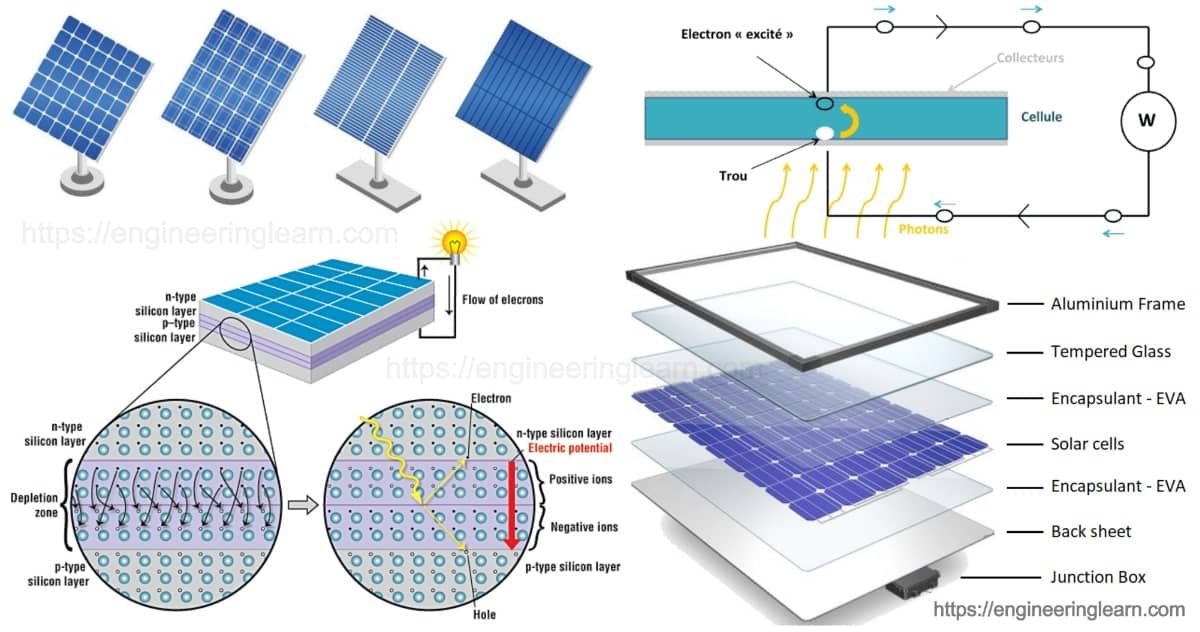5 Easy Facts About Solar Systems Described
Solar Systems Fundamentals Explained
Table of ContentsThe Main Principles Of Solar Systems About Solar SystemsThe Ultimate Guide To Solar SystemsThe Facts About Solar Systems RevealedOur Solar Systems Ideas
When it comes to thin-film solar panels, these are best matched for locations where the heavy and labor-intensive installation of crystalline silicon is not practical. Such places can include commercial buildings with tight areas or thin roofings; compact spaces such as entertainment cars and also boat; as well as areas that need versatile installation instead of inflexible paneling.So whatever type you choose to go with, ensure to do your homework to ensure that it's the most effective alternative for your requirements. To learn more regarding solar fundamentals register for our blog site.
The majority of the photovoltaic panel options currently offered fit in one of three kinds:, (also called multi-crystalline), as well as. These photovoltaic panels differ in how they're made, look, performance, expenses, and the setups each are best matched for. Depending on the kind of setup you're taking into consideration, one alternative may be better than the others.
Monocrystalline panels are between 15-20% effective, making them one of the most reliable of all crystalline panels, Polycrystalline panels are in between 15-17% reliable as well as can be one of the most inexpensive alternative. Thin film photovoltaic panels are best for unorthodox roof designs and also are one of the most resistant. To generate electricity, solar cells are made from a semiconducting material that transforms light into electrical energy.
6 Easy Facts About Solar Systems Described
Both monocrystalline and also polycrystalline solar panels have actually cells constructed from silicon wafers. To build a monocrystalline or polycrystalline panel, wafers are assembled into rows and columns to form a rectangle, covered with a glass sheet, and framed with each other. While both of these kinds of photovoltaic panels have cells made from silicon, monocrystalline and polycrystalline panels vary in the composition of the silicon itself.
Alternatively, polycrystalline solar batteries are composed of pieces of silicon crystals that are thawed with each other in a mold and mildew prior to being cut right into wafers. Unlike monocrystalline as well as polycrystalline photovoltaic panels, thin-film panels are made from a variety of products. One of the most widespread kind of thin-film photovoltaic panel is made from cadmium telluride (Cd, Te).
This kind of thin-film innovation likewise has a glass layer on the top for protection. Thin-film solar panels can additionally be made from amorphous silicon (a-Si), which resembles the make-up of monocrystalline and also polycrystalline panels. These thin-film panels make use of silicon in their composition, they are not made up of strong silicon wafers.
While the solar cells themselves are black, monocrystalline solar panels have a range of colors for their back sheets as well as frames. The back sheet of the solar panel will certainly frequently be black, silver or white, while the steel frameworks are generally black or silver. Unlike monocrystalline solar cells, polycrystalline solar batteries often tend to have a blue color to them because of the light showing off the silicon pieces in the cell in a different means than it shows off a pure monocrystalline silicon wafer.
The 15-Second Trick For Solar Systems

Silicon is often used to make thin-film solar panels, it is not the same solid silicon wafers. Thin-film solar panels have a tendency to have lower effectiveness, as well as power next abilities contrasted to crystalline panels.
In spite of this, thin-film panel still have their location in the solar market., so building proprietors that do not like the appearance of solar panels can still go solar.
Get This Report about Solar Systems

Photovoltaic panel performance (measured in percentage) allows you recognize a solar panel's ability to turn sunshine right into electrical energy (solar systems). If photovoltaic panels with different effectiveness scores get the same quantity of sunshine for the exact same amount of time, the go to these guys more efficient panel will certainly produce more electricity than the much less efficient panel.
While solar panel performance is among the most critical features made use of to analyze a photovoltaic panel's high quality, it is not the only factor to think of when choosing photovoltaic panels. An additional variable to consider when picking photovoltaic panels for your house is their layout and also the materials utilized to construct them.
Monocrystalline solar panels make use of a manufacturing strategy that obtains one of the most out of the moms and dad material silicon. In a monocrystalline photovoltaic panel, silicon ingots are cut right into slim wafers and installed on panels. The panels are dark black with an one-of-a-kind appearance that is easy to area. Due to the fact that the silicon ingots have a really high purity ranking, they stand out at creating electricity.
Getting The Solar Systems To Work
We want to offer you panels with costs efficiency, since you will have more complete satisfaction (and also manufacturing) in the lengthy run.